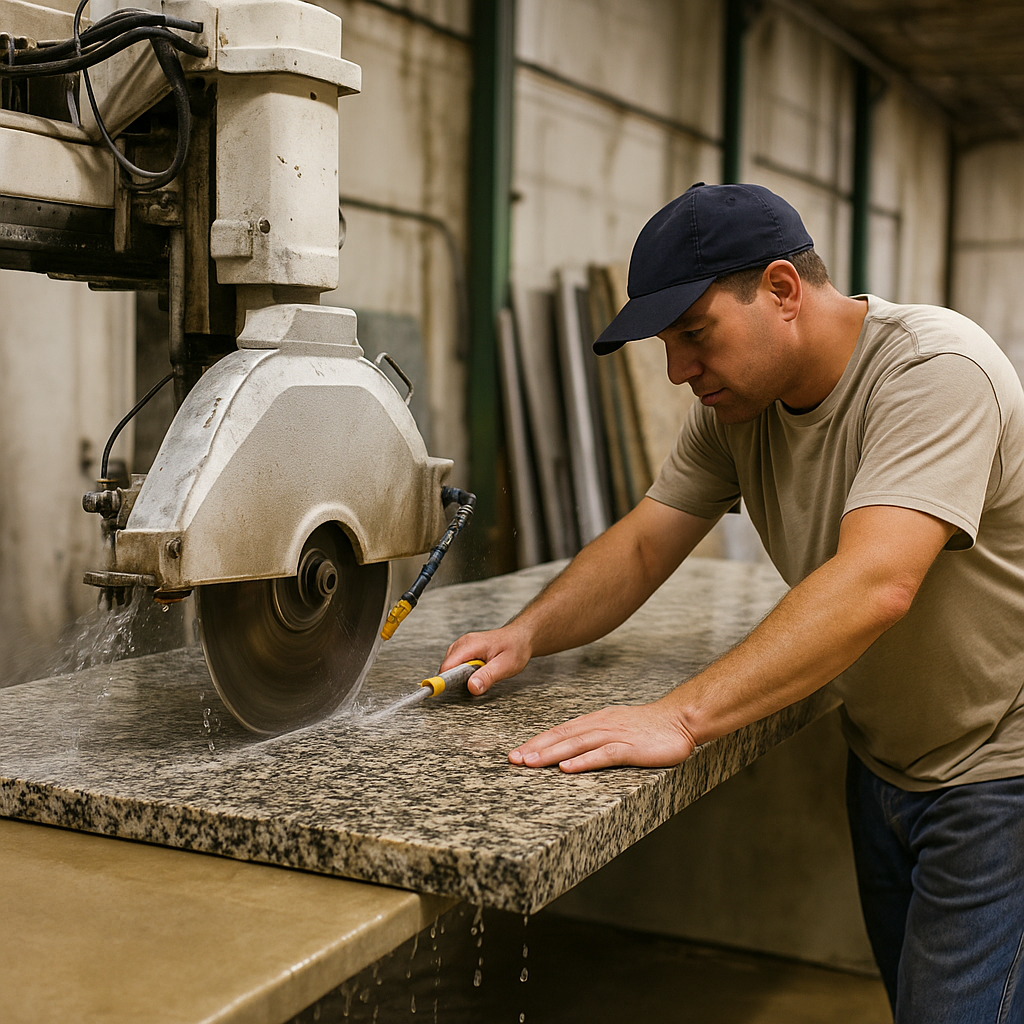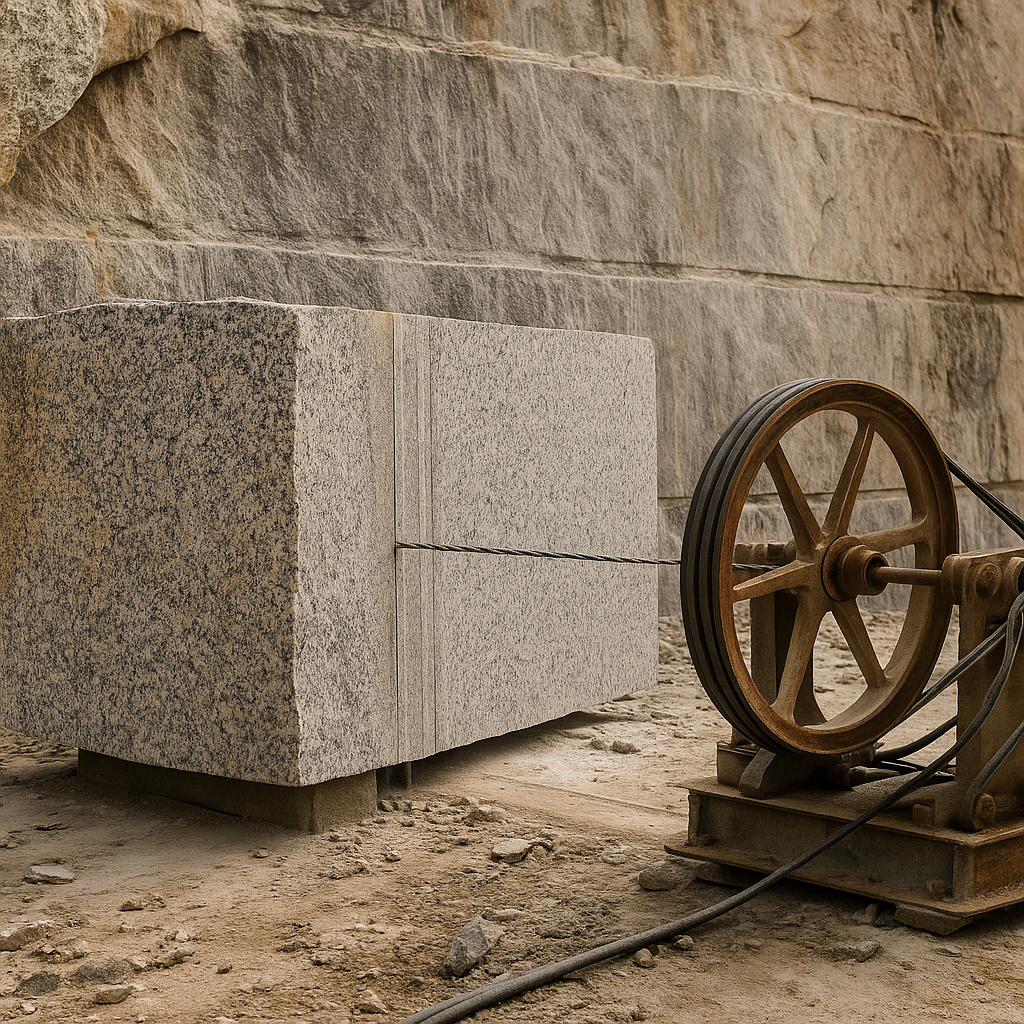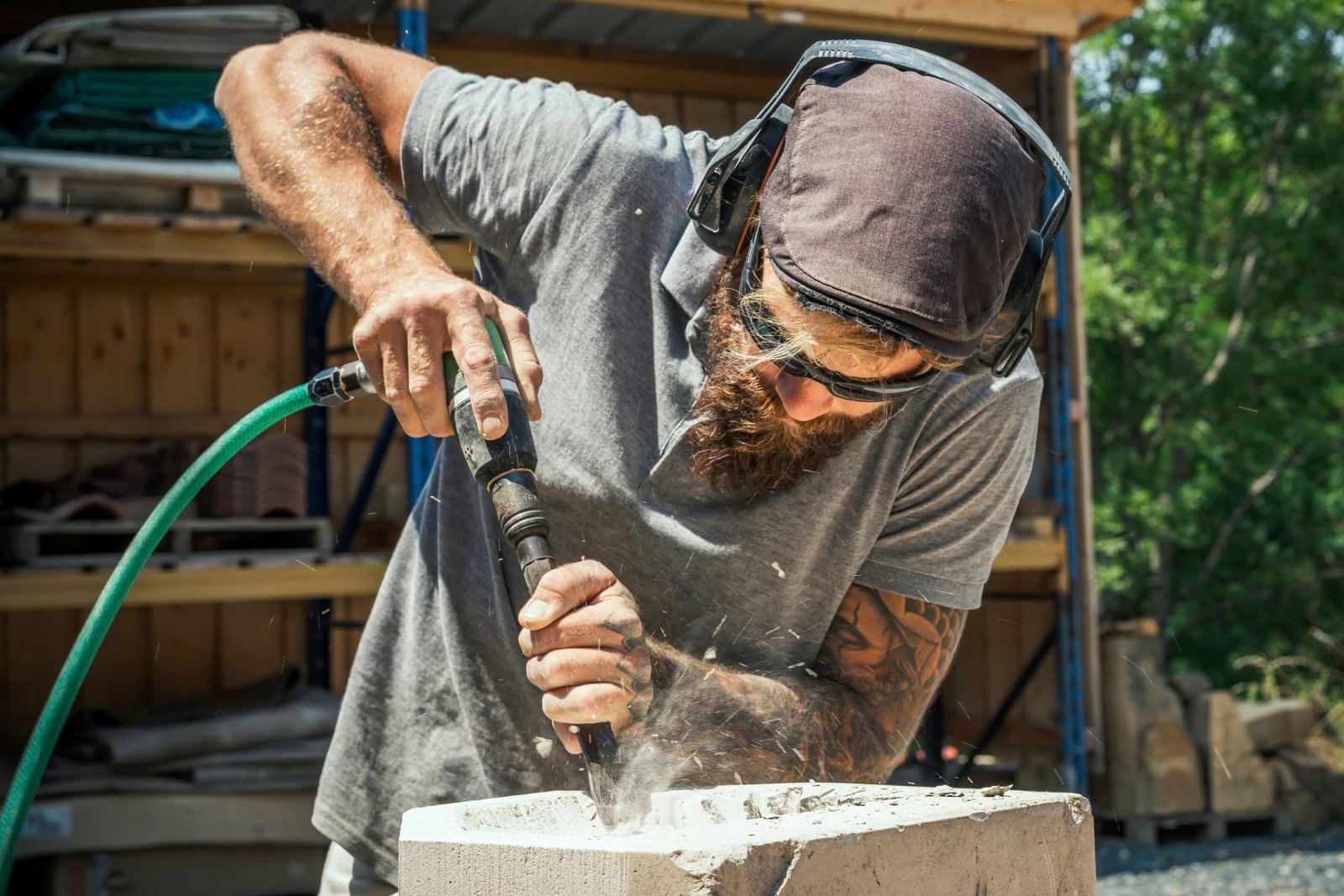
A granite countertop is one of the most sought-after features in home design, admired for its durability, beauty, and timeless appeal
A granite countertop is one of the most sought-after features in home design, admired for its durability, beauty, and timeless appeal. But have you ever wondered how that gleaming slab of natural stone ends up in your kitchen or bathroom?
This guide walks you through the entire process of how granite countertops are made—from quarrying the stone to installing the final polished surface. Understanding the journey behind a granite slab helps homeowners better appreciate the craftsmanship and natural origin of their countertops while making smarter decisions about granite countertop maintenance, pricing, and customization.

What Is a Granite Countertop?
Before we explore the production process, it’s essential to understand what granite is.
A granite countertop is made from 100% natural stone. Granite is an igneous rock formed deep in the Earth’s crust from cooled magma, composed primarily of quartz, feldspar, and mica. Each slab is unique, offering varied colors, patterns, and textures. Its resilience and versatility make it ideal for kitchen countertop, bathroom, or outdoor applications.
👉 What Is a Granite Countertop?
Step-by-Step Process: How Granite Countertops Are Made
Step 1: Quarrying the Granite
Granite begins its life as a massive block of stone buried beneath the Earth’s surface. Specialized mining companies extract the stone from granite quarries around the world—including Brazil, India, Italy, and the United States.
Key Features of This Step:
- Large blocks (sometimes weighing over 20 tons) are cut using wire saws or diamond-tipped drills.
- Explosives may be used to free large sections from the quarry wall.
- Blocks are then transported to a processing facility for cutting and shaping.

Step 2: Cutting the Granite into Slabs
At the stone processing plant, the rough blocks are cut into granite slabs of uniform thickness, typically 2 cm or 3 cm.
How It Works:
- Diamond gang saws or multi-wire saws slice the blocks.
- Each slab is around 6–10 feet long and 5–7 feet wide.
- Slabs are labeled, graded, and moved to polishing machines.
Step 3: Polishing the Granite Surface
After cutting, the granite surface must be polished to bring out its natural beauty.
Polishing Process:
- Automated polishing machines use rotating pads and abrasive grits.
- The process smooths the surface and enhances the granite countertop colors.
- Slabs can be finished in different textures: polished (glossy), honed (matte), or leathered (textured).
The mineral content of the stone affects the final appearance—learn more at:
👉 What Is Granite Countertop Made Of?
Step 4: Selecting and Inspecting the Slabs
Now polished, slabs are sorted by color, pattern, and quality. This is when homeowners or designers select the exact slab that will become their countertop.
Inspection Tips:
- Check for cracks or pits
- Review color consistency and veining
- Choose slabs that match in tone if more than one is needed
Step 5: Template Creation and Digital Measurement
Before fabrication begins, installers create a custom template based on your cabinetry and appliance layout.
Modern Method:
- Laser templating captures exact dimensions and sink locations.
- Digital files are sent to the fabrication shop for precision cutting.
Step 6: Fabrication and Edge Profiling
This step transforms a raw slab into a tailored granite countertop that fits your space perfectly.
What Fabricators Do:
- Cut the slab to size using CNC (computer-controlled) machines or water jets.
- Add cutouts for sinks, cooktops, and faucets.
- Shape and polish the countertop edges (e.g., eased, bullnose, ogee).
- Reinforce fragile areas, like sink cutouts, with steel rods if needed.
Edge finishing affects both function and visual appeal. For best practices, see:
👉 What Is Edge Finishing Important in Countertop Installation?
Step 7: Sealing the Granite
Once the countertop is fabricated and polished, it is sealed to protect against moisture and staining.
Sealing Process:
- A penetrating sealer is applied to fill natural pores.
- The slab is buffed to remove residue.
- Some premium granite types may not need sealing as frequently.
Regular sealing is a key part of granite countertop maintenance to prevent long-term damage.
Step 8: Countertop Installation
The final step involves transporting and installing the finished granite slab in your home.
Installation Steps:
- Countertops are dry-fit to ensure proper placement.
- Adhesives secure the slab to the base cabinets.
- Seam areas are filled with epoxy and color-matched resin.
- Edges are buffed, and a final inspection is performed.
Proper countertop installation ensures the longevity and function of your granite investment.
Granite Countertop Design Options
Thanks to modern technology and a global stone trade, there are thousands of granite countertop colors and patterns available.
Popular Options Include:
- Black Galaxy – deep black with gold flecks
- White Ice – crisp white with gray veining
- Tan Brown – earthy tones with light speckles
- Blue Pearl – shimmering blue-gray with metallic highlights
Edge profiles and finish types also contribute to your overall granite countertop design.
How Long Does It Take to Make a Granite Countertop?
The full process can take anywhere from 1 to 4 weeks, depending on:
- Template and measurement scheduling
- Customizations and fabrication complexity
- Installer availability
Granite Countertop Prices
Average installed prices range from $40 to $150 per square foot, depending on:
- Stone origin and rarity
- Thickness (2cm vs. 3cm)
- Edge profile complexity
- Location and labor costs
While granite is more expensive than laminate or tile, its longevity and minimal need for granite countertop repair make it a smart long-term investment.
Maintenance and Cleaning Tips
To keep your granite countertop looking its best:
- Clean daily with pH-neutral cleaners
- Wipe up acidic spills (lemon juice, vinegar) immediately
- Reseal every 1–2 years, or as needed
- Avoid using abrasive pads or harsh chemicals
Final Thoughts
Now that you understand how granite countertops are made, from quarry to countertop, you can better appreciate the craftsmanship and geology behind your stone surface. Each step—from cutting and polishing to custom fabrication and sealing—contributes to a one-of-a-kind, high-performance centerpiece in your kitchen or bathroom.
Choosing granite is not just about style; it’s about investing in a material that offers unmatched durability, value, and natural elegance.

